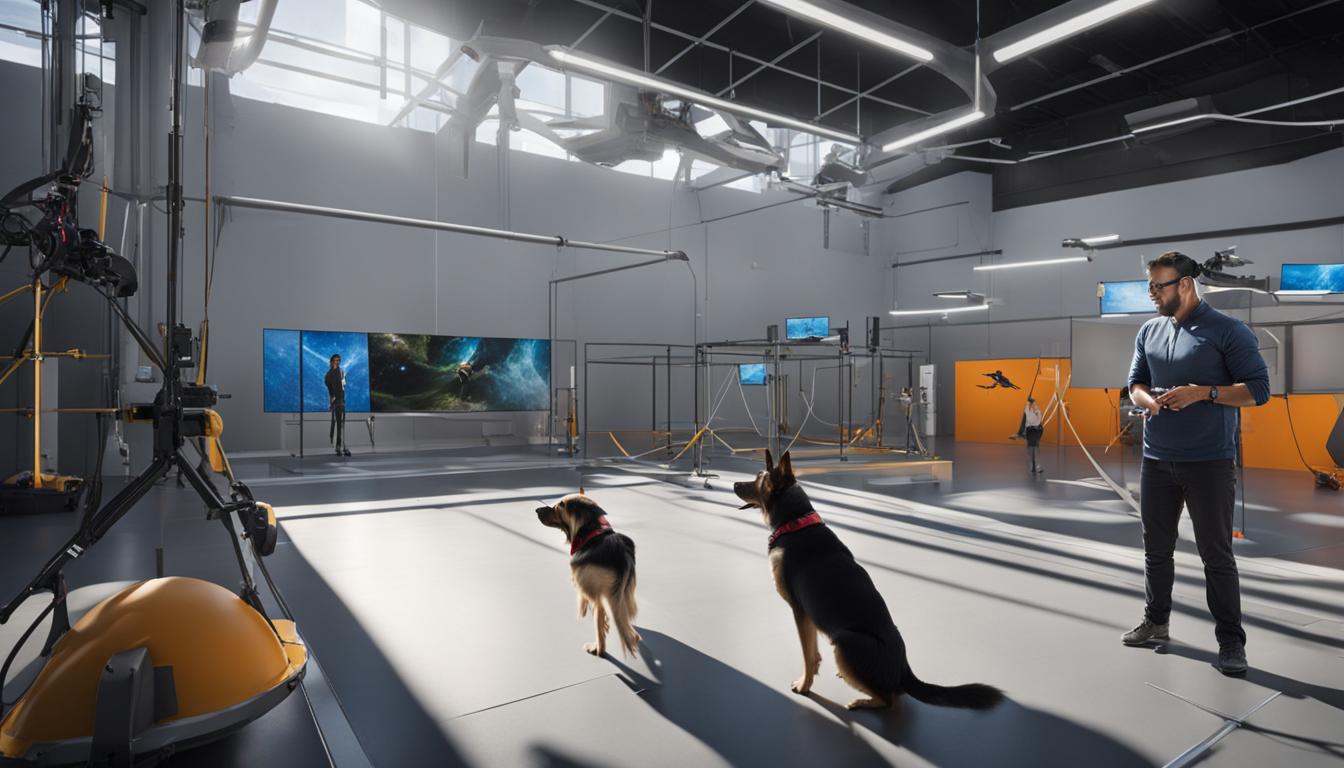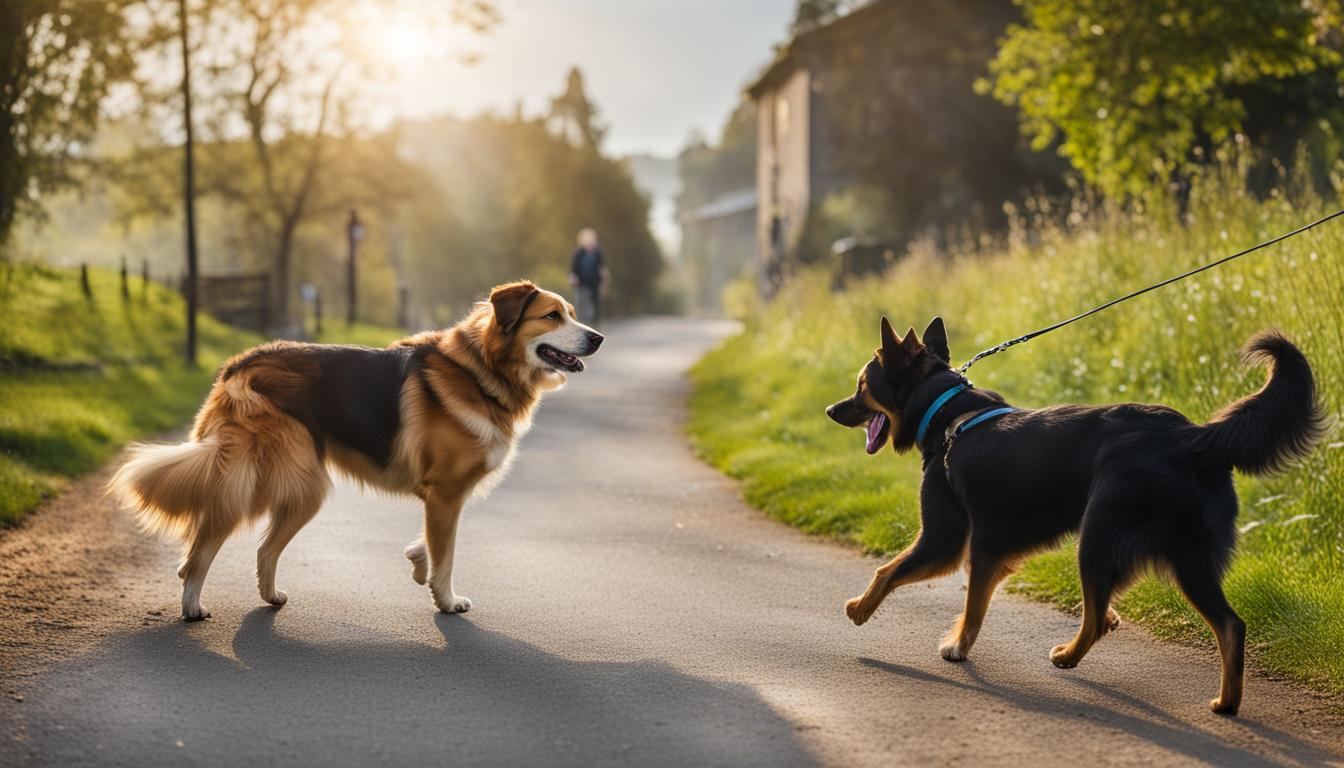Are you a proud puppy parent? Congratulations! Now, it’s time to embark on an exciting journey of training your fur baby and setting them up for a lifetime of success. Puppy training practices, when done right, can make a world of difference in shaping your pup’s behavior and ensuring a harmonious relationship between you and your furry friend.
Key Takeaways:
- Puppy training practices lay the foundation for well-behaved adult dogs.
- Effective puppy training techniques involve positive reinforcement methods.
- Consistency and short training sessions are key to success.
- Training in different environments helps generalize learned behaviors.
- Patience and a consistent routine are vital for your puppy’s growth.
When to Start Training Your Puppy
Puppy training is an important aspect of raising a well-behaved and obedient dog. But when is the right time to start training your furry friend? The answer is, as soon as you bring them home, usually around 8 weeks of age.
At this young age, puppies are like sponges, eager to learn and explore the world around them. They are capable of grasping basic cues such as sit, stay, and come. By starting training early, you can set a solid foundation for your puppy’s future development.
It is recommended to establish a training schedule and set specific milestones for your puppy’s growth. For example, basic cues like sit and stay can be taught at around 7-8 weeks old. Leash training can start indoors, and crate training can begin at 8-10 weeks old. By 10-12 weeks old, your puppy can learn not to bite and start their potty training journey. More advanced training can be introduced around 6 months of age.

Benefits of Training Your Puppy:
- Builds a positive and stronger relationship between you and your puppy
- Fosters trust and loyalty
- Teaches important life skills
- Prevents behavioral problems
- Ensures safety in different environments
- Increases sociability
- Promotes well-behaved and confident behavior
Different Training Methods and Techniques
When it comes to training your puppy, there are different methods and techniques to consider. Two common approaches are aversive-based training and reward-based training. Aversive-based training relies on punishment and negative reinforcement, while reward-based training focuses on positive reinforcement and rewards for desired behaviors.
“Reward-based training methods, such as using treats, praise, and affection, are often preferred as they strengthen the bond between you and your dog without causing fear or anxiety.”
With reward-based training, you can use treats, praise, and affection to reinforce good behavior. This approach helps to build a positive association with training and encourages your puppy to repeat desired actions. It’s important to be consistent in your training and use clear communication to help your puppy understand what you expect from them.
While training your puppy, you may come across common challenges such as jumping, begging, or pulling on the leash. Addressing these challenges requires patience, consistency, and positive reinforcement. By setting boundaries and using reward-based techniques, you can teach your puppy appropriate behavior and overcome these challenges together.
| Training Method | Advantages | Disadvantages |
|---|---|---|
| Aversive-based training | – Can provide quick results – May discourage unwanted behaviors |
– May cause fear and anxiety – Can harm the bond between you and your puppy |
| Reward-based training | – Strengthens the bond between you and your puppy – Encourages positive behaviors |
– Requires consistency and patience – May take longer to see results |
It’s important to note that each puppy is unique, and not all training methods may work for every dog. It’s essential to consider your puppy’s personality, temperament, and individual needs when determining the most effective training approach. Consult with a professional trainer or veterinarian for personalized guidance and advice.
Conclusion
As you wrap up your puppy training journey, it’s important to stay informed about the latest research and trends in puppy training practices. By keeping yourself up to date, you can ensure that you are implementing the most effective techniques for your furry friend.
Remember, proper training from a young age is key to setting your puppy up for a lifetime of good behavior and happiness. By utilizing positive reinforcement methods, you can strengthen the bond between you and your pet while shaping their behavior in a positive way.
Training your puppy not only benefits your relationship, but also promotes their safety, sociability, and mental stimulation. It’s a win-win for both of you! So, stay consistent, be patient, and enjoy the process of watching your little pup grow into a well-behaved and obedient companion.
Whether it’s staying updated on the latest puppy training research or implementing new training practices, remember that this journey is all about you and your furry friend. So, embrace the adventure and have fun as you train your adorable little bundle of joy!
FAQ
When should I start training my puppy?
You can start training your puppy as soon as you bring them home, usually around 8 weeks of age.
What can I teach my puppy at a young age?
At a young age, you can start teaching your puppy basic cues like sit, stay, and come.
What are the benefits of training my puppy?
Training your puppy helps build a positive and stronger relationship, prevents behavioral problems, and increases sociability and confidence.
What are the different methods of training a puppy?
There are two common methods: aversive-based and reward-based. Reward-based methods, using positive reinforcement, are recommended for a stronger bond and positive behaviors.
How can training my puppy help with common challenges?
Training can help address challenges like jumping, begging, and pulling on the leash. Consistency and clear communication are key.





